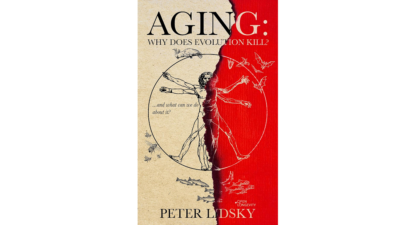For the first time, scientists have shown that the abundance of proteins needed for mitochondrial energy production in human brains is linked to perceived psychosocial experiences [1].
Picking the brains
Negative psychosocial experiences have been linked to health problems by numerous studies. However, not enough is known about the concrete mechanisms at play. In this new study, scientists from Columbia University have provided interesting insights that point to a possible mediatory role of mitochondria in the brain.
The researchers utilized data from two cohorts of several hundred diseased elderly patients who had donated their brains to science. While they were still alive, periodic psychosocial self-assessments had been collected over the course of up to two decades.
How do your mitochondria feel?
Proteomic analysis of the brains revealed a link between psychosocial experiences and mitochondria, the organelles that produce the lion’s share of energy in our cells. Instead of analyzing thousands of mitochondrial genes one by one, the researchers worked with seven generalized aspects of mitochondrial health, such as metabolism and small molecular transport.
One such factor, OxPhos protein abundance, relates to the amount of protein available for oxidation-phosphorylation reactions, which are at the core of mitochondrial energy production. In the dorsolateral prefrontal cortex (DLPFC), a brain area that is involved in executive functions and emotional regulation and is known to be sensitive to psychological stress, this factor showed marked correlation with both positive and negative psychosocial experiences.
The positive psychosocial aspects most associated with increased OxPhos protein abundance were well-being and late-life social activity. On the opposite side of the scale, negative mood and negative life events had the biggest effect sizes. “Thus”, the paper notes, “both individual experiences (well-being and mood) and objectifiable factors (social activity and life events) relate to DLPFC brain mitochondrial biology.”
The correlation was most notable for complex I, the largest and most upstream mitochondrial OxPhos enzyme. Psychosocial experiences accounted for 18% to 25% of the variance in the abundance of this protein. For reasons not yet fully understood, the brain is exceptionally vulnerable to complex I defects [2].
Not the neurons
Moving from proteomics to single-cell RNA sequencing enabled the researchers to take an even closer look and yielded intriguing results. The correlation between psychosocial scores and complex I was undetectable for neurons but strong for glia, the “helper” cells that facilitate proper neuronal functions, such as microglia, the brain’s resident immune cells.
“This may be why chronic psychological stress and negative experiences are bad for the brain,” said Caroline Trumpff, assistant professor of medical psychology in the Department of Psychiatry at Columbia University and a lead author on the paper, “because they damage or impair mitochondrial energy transformation in the dorsolateral prefrontal cortex, the part of the brain responsible for high-level cognitive tasks.”
These results do not come as a complete surprise. Scientists have already shown that in animal models, stress impairs mitochondrial function [3]. Moreover, this relationship appears to be bidirectional: the same group that authored this new study had found that differences in mitochondrial energy production capacity affect anxiety and social avoidance in rodents [4].
Complex interactions
“We’re showing that older individuals’ state of mind is linked to the biology of their brain mitochondria, which is the first time that subjective psychosocial experiences have been related to brain biology,” said Trumpff.
Yet, the researchers admit that their study has several limitations, such as inability to establish causation. Instead, they propose four “biologically plausible scenarios” to explain their findings. First, that psychosocial experiences affect brain activity and thus mitochondrial biology. Second, that mitochondrial biology affects behavior and perception of psychosocial experiences. Third, a bidirectional relationship, sort of a positive feedback loop. Finally, other factors, such as environmental pollution, could independently affect both mitochondria and psychosocial experiences. “However,” the authors note, “the emerging picture in the literature is that all those pathways are interactive, and thus, our results may reflect the outcome of those complex interactions.”
In this study, we used longitudinal psychosocial data and postmortem DLPFC proteomics in a sample of older adults with and without cognitive impairments to evaluate the association between psychosocial experiences and brain mitochondrial biology. Individuals reporting more positive experiences, such as greater well-being, had greater brain tissue OxPhos complex I protein abundance, while the opposite effect was found for negative psychosocial experiences. Considering their independent contributions (people feeling more positive may report fewer negative experiences), we find that ~18 to 25% of the variance in complex I abundance between individuals was attributable to self-reported psychosocial experiences.
Literature
[1] Trumpff, C., Monzel, A. S., Sandi, C., Menon, V., Klein, H. U., Fujita, M., … & Picard, M. (2024). Psychosocial experiences are associated with human brain mitochondrial biology. Proceedings of the National Academy of Sciences, 121(27), e2317673121.
[2] Quintana, A., Kruse, S. E., Kapur, R. P., Sanz, E., & Palmiter, R. D. (2010). Complex I deficiency due to loss of Ndufs4 in the brain results in progressive encephalopathy resembling Leigh syndrome. Proceedings of the National Academy of Sciences, 107(24), 10996-11001.
[3] Batandier, C., Poulet, L., Hininger, I., Couturier, K., Fontaine, E., Roussel, A. M., & Canini, F. (2014). Acute stress delays brain mitochondrial permeability transition pore opening. Journal of neurochemistry, 131(3), 314-322.
[4] Rosenberg, A. M., Saggar, M., Monzel, A. S., Devine, J., Rogu, P., Limoges, A., … & Picard, M. (2023). Brain mitochondrial diversity and network organization predict anxiety-like behavior in male mice. Nature Communications, 14(1), 4726.








